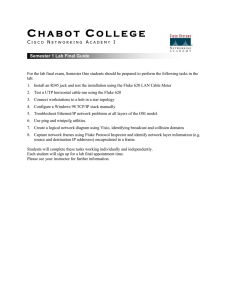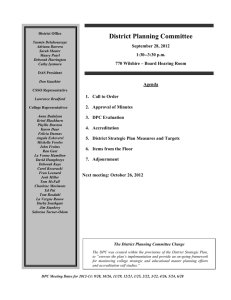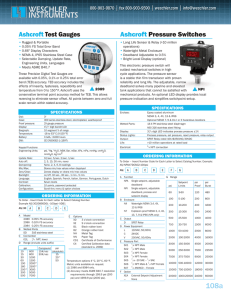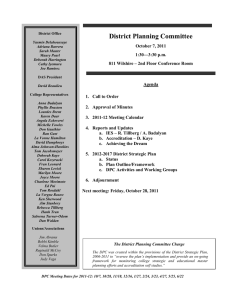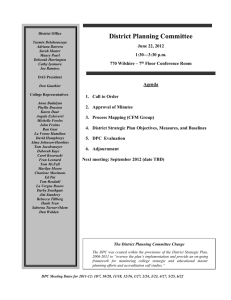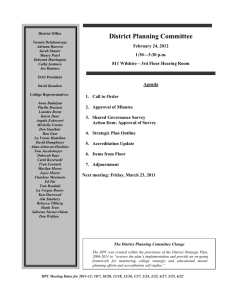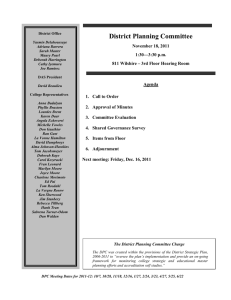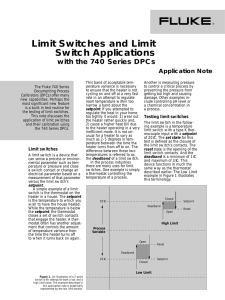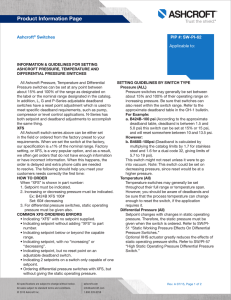Calibrating pressure switches with a DPC
advertisement
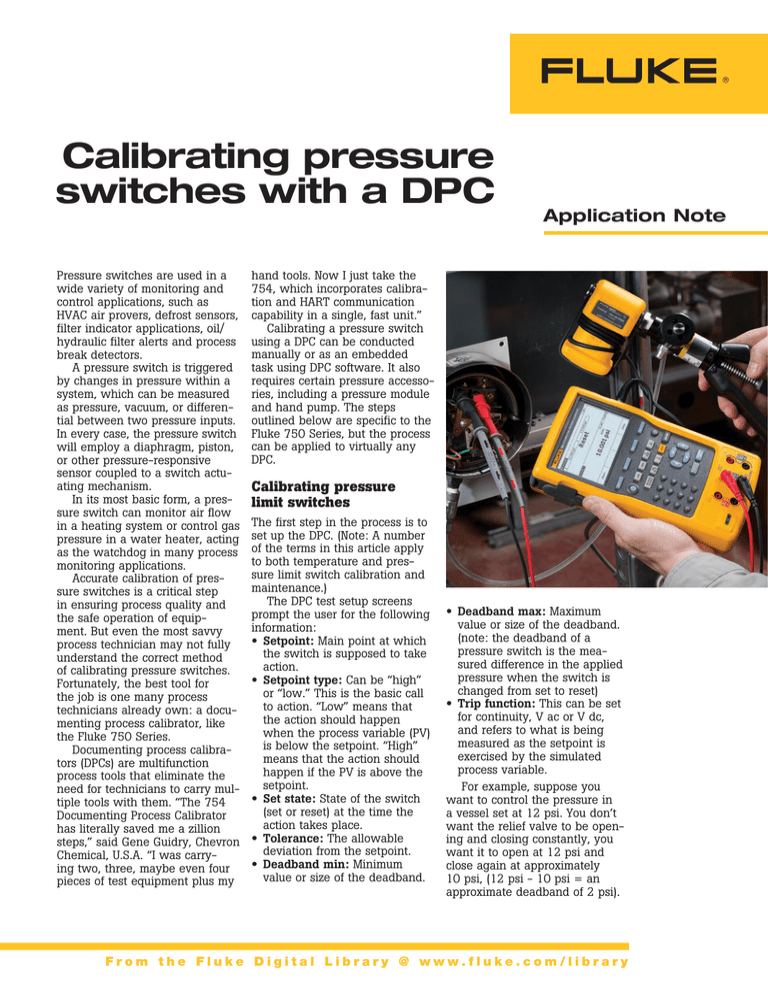
Calibrating pressure switches with a DPC Pressure switches are used in a wide variety of monitoring and control applications, such as HVAC air provers, defrost sensors, filter indicator applications, oil/ hydraulic filter alerts and process break detectors. A pressure switch is triggered by changes in pressure within a system, which can be measured as pressure, vacuum, or differential between two pressure inputs. In every case, the pressure switch will employ a diaphragm, piston, or other pressure-responsive sensor coupled to a switch actuating mechanism. In its most basic form, a pressure switch can monitor air flow in a heating system or control gas pressure in a water heater, acting as the watchdog in many process monitoring applications. Accurate calibration of pressure switches is a critical step in ensuring process quality and the safe operation of equipment. But even the most savvy process technician may not fully understand the correct method of calibrating pressure switches. Fortunately, the best tool for the job is one many process technicians already own: a documenting process calibrator, like the Fluke 750 Series. Documenting process calibrators (DPCs) are multifunction process tools that eliminate the need for technicians to carry multiple tools with them. “The 754 Documenting Process Calibrator has literally saved me a zillion steps,” said Gene Guidry, Chevron Chemical, U.S.A. “I was carrying two, three, maybe even four pieces of test equipment plus my Application Note hand tools. Now I just take the 754, which incorporates calibration and HART communication capability in a single, fast unit.” Calibrating a pressure switch using a DPC can be conducted manually or as an embedded task using DPC software. It also requires certain pressure accessories, including a pressure module and hand pump. The steps outlined below are specific to the Fluke 750 Series, but the process can be applied to virtually any DPC. Calibrating pressure limit switches The first step in the process is to set up the DPC. (Note: A number of the terms in this article apply to both temperature and pressure limit switch calibration and maintenance.) The DPC test setup screens prompt the user for the following information: • Setpoint: Main point at which the switch is supposed to take action. • Setpoint type: Can be “high” or “low.” This is the basic call to action. “Low” means that the action should happen when the process variable (PV) is below the setpoint. “High” means that the action should happen if the PV is above the setpoint. • Set state: State of the switch (set or reset) at the time the action takes place. • Tolerance: The allowable deviation from the setpoint. • Deadband min: Minimum value or size of the deadband. • Deadband max: Maximum value or size of the deadband. (note: the deadband of a pressure switch is the measured difference in the applied pressure when the switch is changed from set to reset) • Trip function: This can be set for continuity, V ac or V dc, and refers to what is being measured as the setpoint is exercised by the simulated process variable. For example, suppose you want to control the pressure in a vessel set at 12 psi. You don’t want the relief valve to be opening and closing constantly, you want it to open at 12 psi and close again at approximately 10 psi, (12 psi - 10 psi = an approximate deadband of 2 psi). From the Fluke Digital Library @ www.fluke.com/library Next set up a test for this pressure switch in which you want the following performance: • Setpoint variation of +/- 1.0 psi • Deadband minimum 1.5 and maximum 2.5 psi Now you’re ready to make connections to the pressure switch module. Be sure to: • Take proper precautions— disconnect the device from the process it controls (both the electrical and pneumatic connections) • Connect the center terminals of the DPC across the output contacts of the switch • Connect a pump to the pneumatic input of the switch with a tee connection into the pressure module, like the Fluke 750P Series pictured in Figure 1. When all connections are complete it should resemble Figure 1. Setting up the DPC To set up the DPC, first connect the pressure module. In the measure screen, select measure continuity/ohms. Toggle to the source screen with the MEASURE/SOURCE button. Select pressure. Once the pressure module has initialized, make sure the pressure module is vented to atmosphere and select the CLEAR/ZERO button to zero out the offset of the pressure module. Advance to the split screen by depressing the MEASURE/ SOURCE button. Select the AS FOUND softkey and select single point switch test. From there we will, configure the test per these parameters: Setpoint: 12 psi Setpoint type: The contacts need to be closed to actuate the relief valve above 12 psi; in other words, the action happens when the pressure is high; this is a “high” type setpoint. Set state: When the switch is closed a relief valve is actuated; the set state is “short.” Tolerance: 1.0 psi Deadband min: 1.5 psi Deadband max: 2.5 psi Trip function: Trip continuity 2 Fluke Corporation Hand Pump Pressure Module Pressure Input Figure 1. Depress the enter key and enter the setpoint value (Figure 2) and depress enter. Configure the SETPOINT TYPE and SET STATE as shown, then fill in the test template as per Figure 3. Depress Done. Figure 4. Figure 2. Figure 5. Figure 3. Performing the switch test The test can now be performed by selecting the MANUAL TEST softkey (Figure 4). Using the hand pump connected (Figure 1), vary the pressure applied to the pressure switch and pressure module slowly, back and forth across the Calibrating pressure switches with a DPC setpoint and reset points. It will be apparent that the set/reset has changed as indicated by the status in the measure screen. As the state changes, the actual set and reset points will be logged during the test (Figure 5). When the set and reset states are captured (it is a good idea to repeat the testing of set and reset several times to confirm repeatability), depress the DONE softkey. Figure 6 shows the AS FOUND test result. Note that the DEADBAND ERROR is indicated in reversed type. If the AS FOUND setpoint was greater than 1 psi test is complete, select the DONE softkey. If the adjustment was successful, the results should be similar to Figure 7 with all errors (SETPOINT and DEADBAND) in forward type indicating that the test tolerances as specified are met. If the test fails, re-adjust and repeat the AS LEFT until the test passes. Figure 6. Embedded task considerations Figure 7. from the nominal value of 12 psi, it would also be in reversed type. This reflects that these tests do not meet the tolerances specified in the test setup (Figure 3). Input the tag, serial number, and technician ID, and select Done. Vary the pressure across the setpoint and make adjustments. Once the adjustments are finished, select the AS LEFT softkey. Repeat the test varying the pressure across the setpoint. Once the If the pressure switch test is performed from a task embedded in either Fluke’s DPC/TRACK or a compatible software package, selecting and performing the task is similar, but a few considerations should be reviewed. First, the embedded task will pre-configure all the setup steps in Figures 2 and 3. It is necessary to perform the zeroing of the pressure module in the Source screen as specified previously under the heading “Setting up the DPC.” You can do this by depressing the MEASURE/ SOURCE button until the Source screen is displayed. Select pressure, vent the connection to atmosphere and select the CLEAR/ZERO button to zero the module. Once this is complete, depress the MORE CHOICES softkey until the Tasks selection is available. Select the TASKS softkey, select the pertinent task, and perform the test as noted previously under the heading “Performing the Switch Test.” Tag and serial number will be automatically filled in the tag entry screen. The user will need to fill in their ID information if it is not pre-configured in the calibrator setup menu. Once the pressure switch is calibrated, it may be rendered tamper-resistant by sealing the threads of the adjustment screw or sealing the openings which were accessed for factory calibration. Pressure instrumentation is found in virtually every process plant. Periodic calibration of these pressure, level, and flow instruments is required to keep plants operating efficiently and safely. A high-quality DPC, supported by the appropriate pressure accessories, provides an efficient, precise, and safe way to keep pressure instrumentation working properly. Fluke. Keeping your world up and running.® Fluke Corporation PO Box 9090, Everett, WA 98206 U.S.A. Fluke Europe B.V. PO Box 1186, 5602 BD Eindhoven, The Netherlands For more information call: In the U.S.A. (800) 443-5853 or Fax (425) 446-5116 In Europe/M-East/Africa +31 (0) 40 2675 200 or Fax +31 (0) 40 2675 222 In Canada (800)-36-FLUKE or Fax (905) 890-6866 From other countries +1 (425) 446-5500 or Fax +1 (425) 446-5116 Web access: http://www.fluke.com ©2003-2015 Fluke Corporation. Specifications subject to change without notice. Printed in U.S.A. 4/2015 2069058c-en Modification of this document is not permitted without written permission from Fluke Corporation. 3 Fluke Corporation Calibrating pressure switches with a DPC
